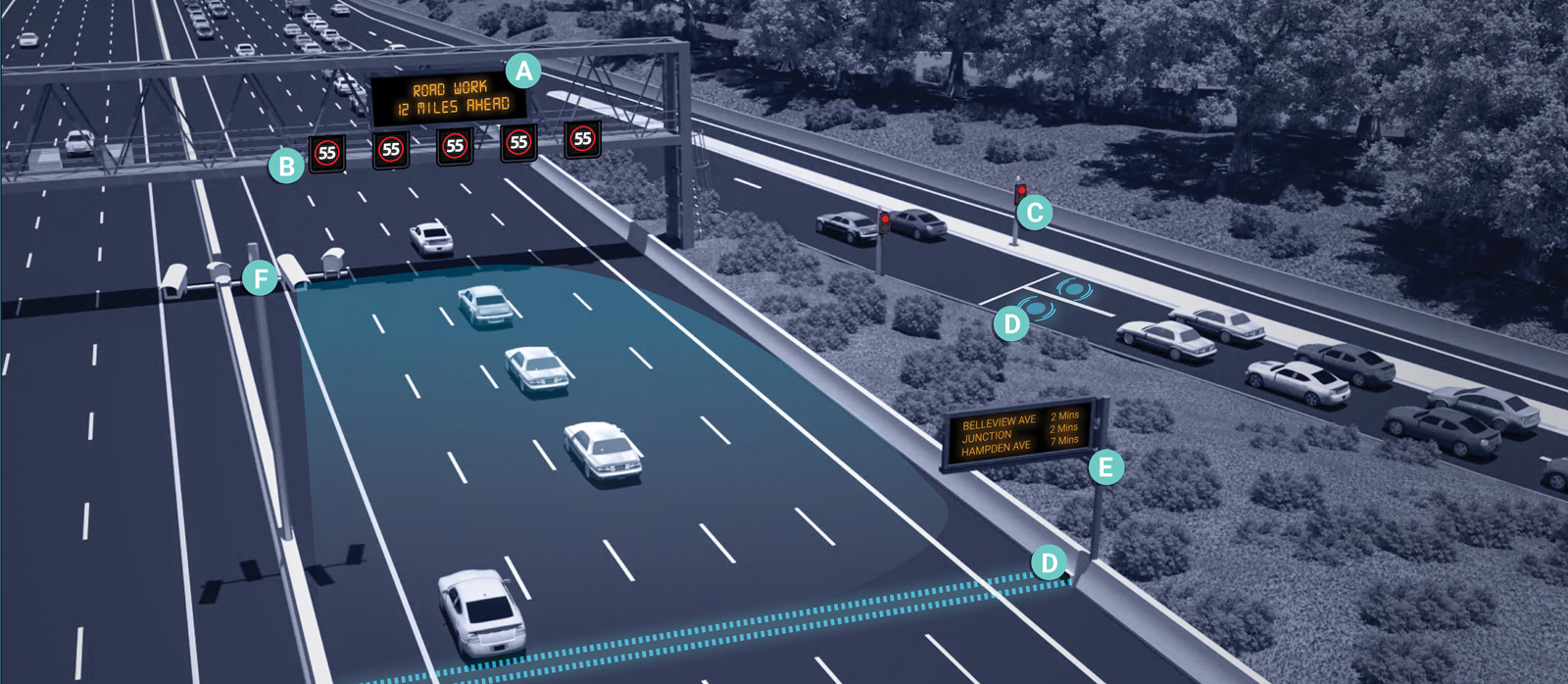1 STREAMS continuously monitors traffic conditions through a foundation of vehicle detectors located at regular intervals on a motorway, on motorway ramps and on adjacent streets.
2 Real-time data from each detection location is consolidated in roadside controllers and communicated via a fiber optic network to Transmax’s integrated control platform STREAMS.
3 The data is then processed using advanced traffic management algorithms to identify changes in traffic flows and to determine how and where ramp metering rates, speed limits and signage need to be adjusted to sustain maximum traffic flow.
4 CCTV cameras and vehicle detection rapidly identify incidents that could disrupt traffic flows. When the system identifies incidents, the solution’s lane use management system and electronic message signs warn motorists of adverse traffic conditions.
5 Overhead lane use control can be utilised to close lanes in advance of incidents, ensuring traffic merges in a more orderly manner while variable speed limits can be changed to advise motorists to gradually reduce speed ahead of the lane merge.

The innovative solution is designed to optimise motorway throughput, travel speed and travel time by regulating the rate that traffic enters the motorway to disperse platoons, managing the flow rate of entering vehicles in a merge area when the motorway is near capacity, and ensuring that volumes at critical locations do not exceed optimum capacity and create a bottleneck.
This in turn improves safety by reducing incidents due to braking and stop-start flow, reducing merging conflicts and minimising turbulence in areas of high weaving.
© Copyright 2021 Transmax Pty Ltd. | All Rights Reserved




